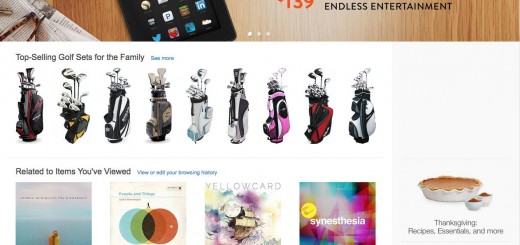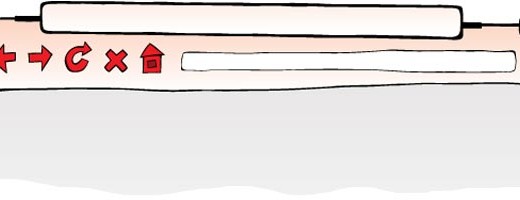Ten Tips to Create an Effective Logo Design
2As a rule of thumb there are several key factors that logo designers should bear in mind if their logos are to be a success.

Even the best designers suffer from creativity block on occasion. If you keep the following tips in mind, ideas will be set in motion and channeled in the right direction to create an effective logo.
Related posts:
- Vector Logo Templates Pack Giveaway for Members
- Extraordinary Mono-Color Logo Examples
- Creative Examples of Negative Space Logo Designs
- Logo Design Trends for Big Companies
- How to Design a Logo of Your Initials
1. Simple is better
A complex logo can sometimes prove difficult to reproduce and hard to remember. Opting to use a simple image as your main design is a wise move. Pepsi, FedEx and Nike have very strong logos which are recognizable anywhere in the world, yet the elements of the design are simple.
2. Consider designing logos that are void of details
You do not always have to create logos that depict or portray what the company does. Vector is better. Opt to create a logo using clean crisp lines with very limited colors, as this is more effective than a complex 3D design. Vector software creates designs that are well defined and not blurry when resizing is required. Adobe Illustrator is costly, but it is one of the most popular vector programs now available. Inkscape is a reputable free vector program you could consider using if you are operating on a budget. Corporate logos that are graphically void of detail can adapt to any direction the company may decide to take.
3. Size matters
Logos will have to be reproduced in varying sizes. In the design process, envision your logo appearing on a bill board, using sizes ranging from larger to smaller images that might appear on a variety of products. Logos that are overly complex do not fare so well when they have to be reproduced as a very small image. The details become so squeezed together that they no longer remain recognizable. Simple logos such as the Nike swoosh are easily recognizable on shirt sleeves even from a reasonable distance. The Nike logo design may not be very dynamic but the brand is so strong that the moment the logo appears, irrespective of the size, the viewer knows exactly what he/she sees.
4. Pay attention to footprints and aspect ratios
You should give careful thought to the effectiveness of the relationship of the height to width (aspect ratio) and how well they complement each other. Think about a logo design that is too tall and skinny or too wide and short. Not too appealing are they? Logos should be visually pleasing with details such as height, width and layout complementing each other. A logo with poorly chosen proportions is a designer’s nightmare. You will have issues when laying out your logo in artwork. Logos in the range of a business card size are good choices. This size is closer to the ‘golden mean’ (ideal moderate position between two extremes) and is more adaptable and pleasing to the eye.
The physical boundaries that are required for the reproduction of your logo (the footprint) are often overlooked but are sometimes vital to a logo’s success. Although there are no hard and fast rules governing this, it is important that you pay attention to a company’s logo footprint in the initial stages of your design. Think of your new logo’s footprint as a bounding box around the minimum area required for reproduction. Bear in mind that any trailing elements, those that extend beyond the main image area, drastically affect the logo’s footprint and aspect ratio.
5. How to deal with icons and text
When designing logos that require the use of an iconic logo and textual treatment for the company’s name, it is best to not to connect the two. Treat the elements as two distinct pieces. This will allow clients to use the elements solo, and the logo will still be effective. This is especially true for website and blog header logos.
6. Connect with your audience
It is understandable that as the designer you would want to like your logo, but bear in mind that it needs to appeal to your customers and should be created with them in mind. Do not overshadow the intended message of the design with your personal views. Pay attention to the audience to whom the logo should appeal.
7. Reflect the essence and theme of the company effectively
A good logo will always reflect the essence of the company. A cartoon logo would not be the best choice if it is to appeal to a conservative audience. Ensure that you understand the theme of the industry your logo is to represent and express your class and experience as a logo designer here.
8. Create an instant impact
You may not have control over the length of time your audience gets to view your new logo, but you can ensure it will grab their attention. Logos that will need deciphering or have an elaborate story will most likely not effectively communicate the essence of the company, its service or product.
9. Using a Tagline or strapline
It is best to stay away from taglines as they may create a lot of visual clutter in your logo. Taglines that are too wordy will require a small font which will become illegible when the logo size is reduced. Consider having the tagline as a separate element that can be added when appropriate.
10. Be different, make it memorable
Clients may ask that you design logos similar to another company’s design but be different in your design. Be unique and avoid clichés. Make your logos stand out when compared to your competitors, and create an edge for yourself in a cluttered marketplace.
Ensure that you test out your logo. Examine it from various angles and in various sizes, on its side and upside down to get a true sense of its balance. Visualize how it would look in various sizes and on various objects. Once you bear these factors in mind, you will do well at your craft.





Great list here, Connecting with your audience and Reflect the essence and theme of the company effectively are two of the most efficient ways to make sure your logo succeeds. Your logo may be great looking nice design scale effectively but not link to the company which will most likely result in you redesigning it.
In todays design age if the logo doesn’t link to the product then your highly unlikely to make it work for the company your doing for unless their big enough to be able to have abstract logos that dont relate.
Nonetheless great post thanks.
thanks for sharing ideas 😉